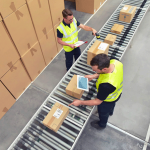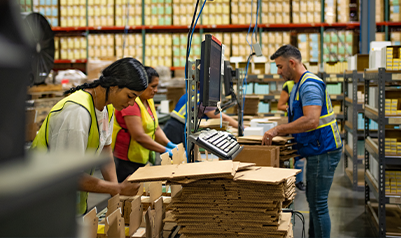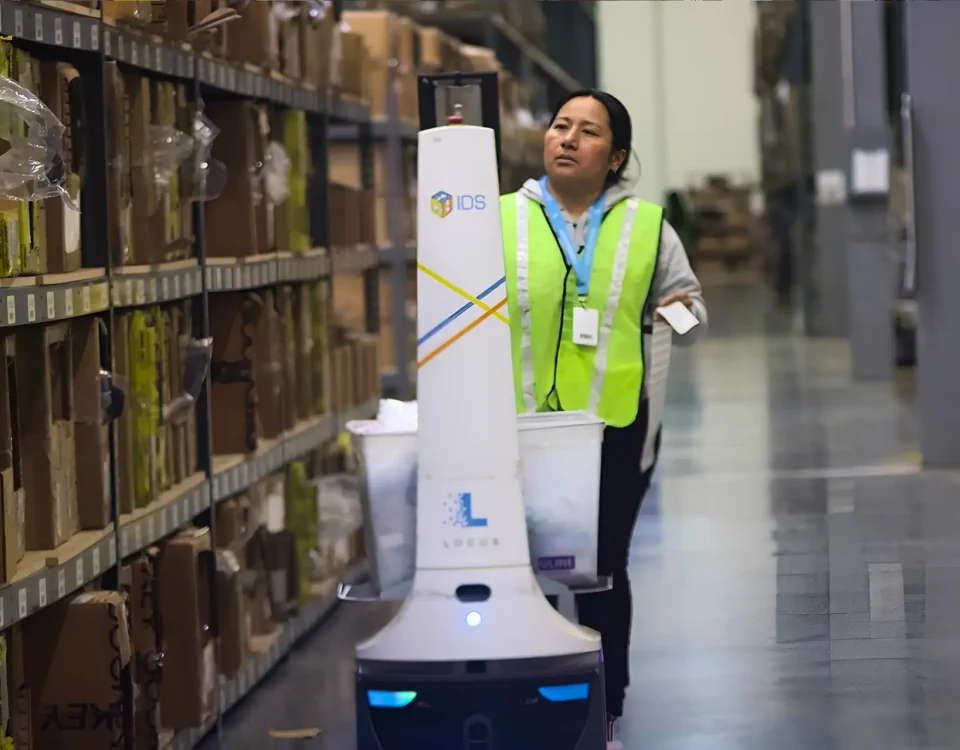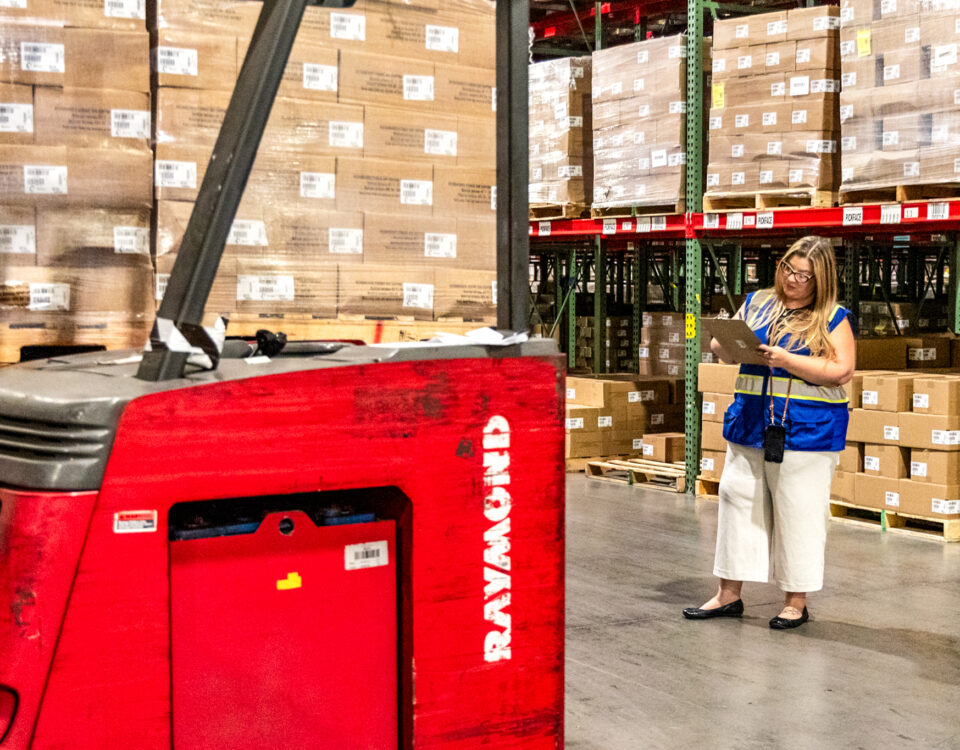Returns don’t have to be a headache. With a few key adjustments, your returns process can be a source of efficiency, not chaos.
When companies think about improving their logistics, they often focus on getting products out the door faster or optimizing the warehouse layout for speed. But there’s another side that often gets overlooked: returns.
Whether it’s incorrect addresses, damaged goods, or simply a change of heart from the customer, your returns process can cost your business far more than you might realize.
The Hidden Cost of Returns
Returns are a logistical black hole for many companies. It’s easy to see why: you’re dealing with product that’s already been sold, often damaged or opened, and the process of getting it back into inventory can be time-consuming. And time is money.
In fact, the National Retail Federation found that in 2022, returns cost retailers $816 billion, a 10% increase from the previous year. Add to that the operational costs of handling these returns, the potential loss of inventory, and the challenge of fraud, and it becomes clear that returns are not a small issue—they’re a major factor in your bottom line.
But here’s the thing: with the right process, managing returns can be a lot more efficient, and the impact on your business can be minimized.
Why Many Returns Processes Fail
Most returns processes fail because they are reactive, not proactive. They wait until the returns start piling up, and then the business scrambles to figure out what to do. In contrast, a proactive returns process is designed to minimize the volume of returns in the first place and handle those that do come in with efficiency and precision.
Here are the common areas where a returns process tends to break down:
- Lack of address validation: Incorrect addresses are a major driver of returns-to-sender. Failing to validate addresses on the front end can mean significant losses in shipping and handling.
- No standardized SOP for returns: Without a standard operating procedure (SOP), the returns process can quickly become a mess. This lack of structure leads to inconsistent handling, more frequent errors, and higher costs.
- Poor visibility into returns: Many businesses don’t have clear visibility into where their returns are coming from, what condition they’re in, or how they should be handled. This leads to delays in processing, inventory mistakes, and fraud.
So, how do you streamline your returns process to save time and money?
Step 1: Implement Address Validation at Checkout
The first step in minimizing returns is ensuring that the products you ship get to the right place. Address validation software can help catch common mistakes before they become costly problems. This ensures that your shipping details are accurate and that your carriers can deliver your products efficiently.
By investing in address validation tools at checkout, you’ll cut down on the number of incorrect deliveries and returns-to-sender. Many retailers now include prompts during the checkout process, asking customers to confirm their address or suggesting corrections if it looks wrong. This small adjustment can significantly reduce your return rate.
Step 2: Use Data to Gain Visibility Into Returns
Returns don’t have to be a blind spot in your operation. By leveraging data and analytics, you can get real-time insight into your returns process. Software solutions like Loop Returns and Returnly integrate directly into your fulfillment systems, allowing you to track returns from the moment they are initiated to the moment they are processed.
With better data, you can pinpoint issues faster. Are a large percentage of returns coming from a specific region? It could be a carrier issue. Are returns spiking after the holiday season? Maybe there’s a packaging issue. By understanding these patterns, you can take corrective action and avoid repeating mistakes.
Step 3: Establish a Clear SOP for Returns Process
Perhaps the most crucial step is establishing a clear, step-by-step SOP for handling returns. Every 3PL partner should have a standard process to follow, from receiving the returned goods to deciding whether they can be restocked or need to be discarded.
At IDS Fulfillment, we’ve refined our process to handle returns efficiently—individualized to meet your business’ specific needs. Every item is scanned and documented, and our system automatically pulls up the details of the order. This reduces errors and ensures that returns are processed quickly and accurately.
A solid returns SOP should include:
- How items should be logged and categorized (e.g., available, QA hold, damaged)
- Criteria for accepting or rejecting returned goods based on quality checks
- Steps for re-bagging or re-tagging items if necessary
- Guidelines for handling fraudulent returns
By standardizing this process, you minimize the human error factor and ensure consistency.
Step 4: Optimize Your Returns Process Workflow With Technology
There are numerous tools on the market that can make the returns process easier. For example, systems like Loop Returns allow customers to initiate returns online and generate return labels. This reduces the friction in the return process while still giving you control.
On the fulfillment side, technology like Returnly integrates with your systems, allowing you to manage returns more effectively. Automated data entry, inventory management, and photo documentation of returned items all contribute to a smoother, faster returns process.
At IDS, we’ve taken automation a step further by using advanced technology to validate returns in real-time. This includes capturing pictures of returned items, logging them in the system, and following a decision flowchart to determine if they can be restocked, repaired, or discarded.
Step 5: Manage Fraud and Reduce Losses
Returns fraud is a growing problem. From customers claiming to return more items than they actually did to falsified return labels, fraud can eat into your profits.
The best way to mitigate fraud is to have tight controls in place. This means using return merchandise authorization numbers (RMAs) for every return and tracking items from the moment they leave the customer’s hands to the moment they are processed. By incorporating picture-taking at various stages, you can ensure you’re receiving exactly what the customer claimed they sent back.
Returns are inevitable, but inefficiency doesn’t have to be. By taking a proactive approach and using the right tools and processes, you can save both time and money in your returns operations. By implementing these steps, you can reduce the cost of returns and turn them into a streamlined part of your logistics operation.












